The Enchanting Art of Christmas Baking: Unveiling the Magic of Embossed Rolling Pins
Related Articles: The Enchanting Art of Christmas Baking: Unveiling the Magic of Embossed Rolling Pins
Introduction
With enthusiasm, let’s navigate through the intriguing topic related to The Enchanting Art of Christmas Baking: Unveiling the Magic of Embossed Rolling Pins. Let’s weave interesting information and offer fresh perspectives to the readers.
Table of Content
The Enchanting Art of Christmas Baking: Unveiling the Magic of Embossed Rolling Pins
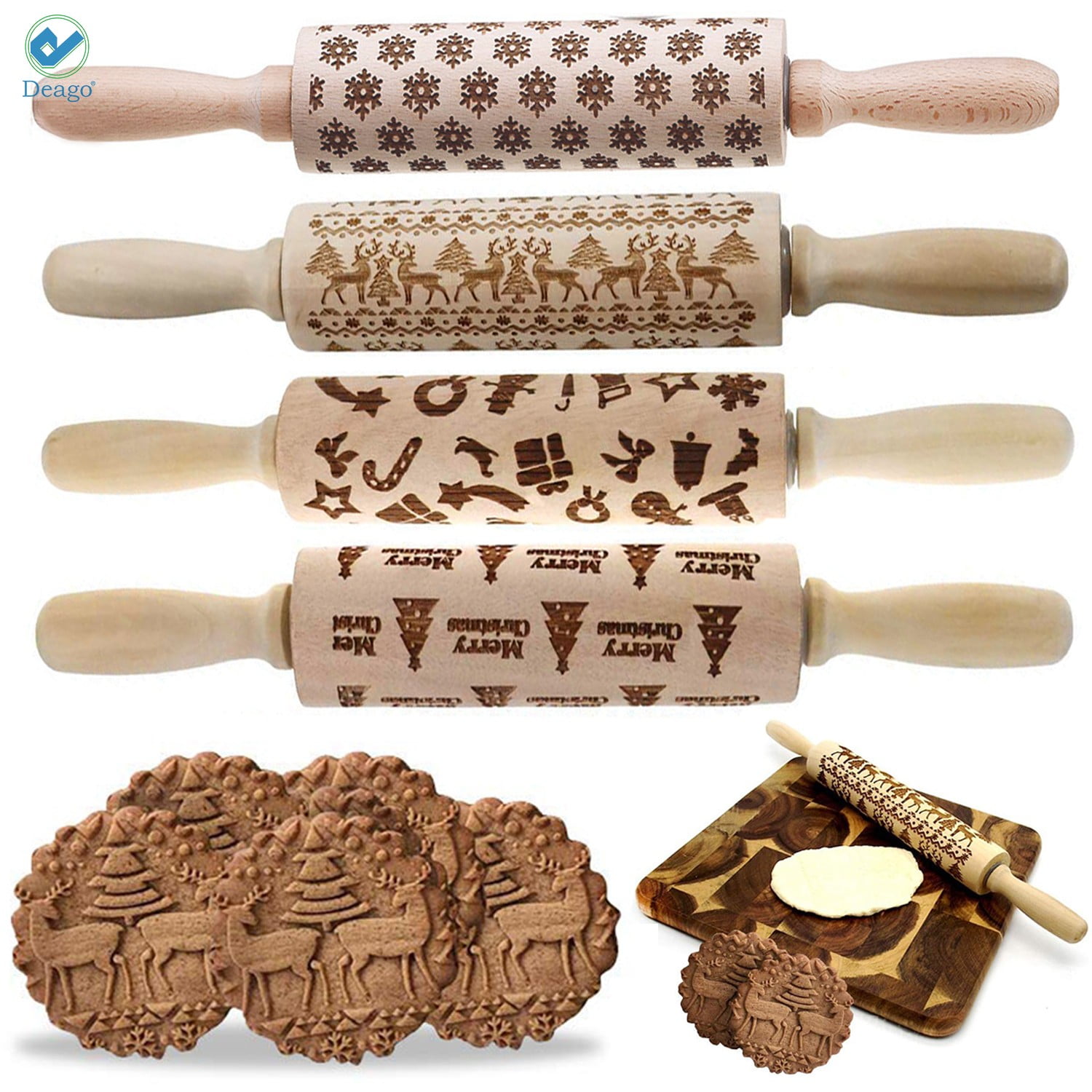
The festive season is a time for warmth, joy, and the sweet aroma of freshly baked treats. Amongst the myriad of holiday traditions, baking takes center stage, offering a tangible expression of love and care. And what better way to elevate these cherished creations than with the whimsical touch of an embossed rolling pin?
This seemingly simple kitchen tool transforms the ordinary into the extraordinary, adding a touch of festive magic to every cookie, pastry, and pie. Beyond its decorative function, the embossed rolling pin serves as a powerful tool for enhancing the baking experience, bringing together artistry, tradition, and culinary delight.
Embossed Rolling Pins: A Legacy of Festive Tradition
The concept of using embossed tools for decorative purposes is deeply rooted in history. From ancient civilizations employing engraved stamps for pottery and textiles to medieval artisans crafting ornate designs on metalwork, the principle of transferring patterns remains consistent.
The embossed rolling pin, specifically, finds its roots in the rich tradition of European baking. In the past, these tools were often handcrafted, with intricate designs carved into wooden dowels. These designs, ranging from simple floral motifs to elaborate scenes of winter landscapes, were passed down through generations, becoming treasured family heirlooms.
The Art of Embossing: From Tradition to Modernity
Today, the embossed rolling pin continues to be a beloved tool for bakers of all levels. Modern manufacturing techniques have allowed for a wider range of designs, materials, and sizes, catering to diverse needs and preferences.
The most common material for embossed rolling pins is wood, offering a natural aesthetic and a warm, rustic feel. However, other materials like silicone and metal are also gaining popularity, providing durability and ease of cleaning.
Designs are no longer limited to traditional motifs. Contemporary embossed rolling pins feature a vast array of festive themes, including snowflakes, reindeer, Santa Claus, gingerbread houses, and even whimsical winter scenes. These intricate patterns add a touch of whimsy and personality to every baked creation, making them perfect for gifting and sharing during the holiday season.
Beyond Decoration: The Practical Benefits of Embossed Rolling Pins
While the decorative element is undeniable, embossed rolling pins offer more than just visual appeal. The raised designs create textured surfaces on dough, adding visual interest and enhancing the overall baking experience.
-
Enhanced Texture: Embossed rolling pins impart unique textures to baked goods, adding a delightful tactile element. Cookies, for instance, can acquire a delicate snowflake pattern, while pie crusts can boast a rustic, hand-crafted look.
-
Improved Flavor: The textured surface created by the embossed design increases the surface area of the dough, allowing for more even browning and optimal heat distribution. This results in a crispier, more flavorful finished product.
-
Easy Handling: Many embossed rolling pins are designed with ergonomic handles, ensuring comfortable and controlled rolling. This feature is particularly beneficial for those who bake frequently or work with heavier doughs.
Embossed Rolling Pins: A Gateway to Culinary Creativity
The versatility of embossed rolling pins extends beyond traditional holiday baking. These tools can be used to create unique designs on a wide range of baked goods, from savory breads and rolls to delicate pastries and even fondant decorations.
By experimenting with different doughs, fillings, and baking techniques, bakers can unleash their creativity and transform simple recipes into works of culinary art. The possibilities are endless, limited only by imagination and the desire to explore the world of baking with a touch of festive flair.
FAQs: Embracing the Magic of Embossed Rolling Pins
Q: What are the different types of embossed rolling pins available?
A: Embossed rolling pins are available in a variety of materials, including wood, silicone, and metal. Each material offers unique advantages in terms of durability, heat conductivity, and ease of cleaning. The design of the embossed pattern also varies widely, from simple geometric shapes to intricate holiday scenes.
Q: How do I choose the right embossed rolling pin for my needs?
A: Consider the following factors when choosing an embossed rolling pin:
- Material: Wood is a classic choice for its natural beauty and durability. Silicone is flexible and easy to clean, while metal offers superior heat conductivity.
- Size: The size of the rolling pin should be appropriate for the size of your baking project.
- Design: Choose a design that complements your baking style and the occasion.
Q: How do I care for my embossed rolling pin?
A: Caring for your embossed rolling pin is essential to ensure its longevity and performance.
- Wood: Wash wooden rolling pins by hand with mild soap and water. Dry them thoroughly and store them in a cool, dry place.
- Silicone: Silicone rolling pins are dishwasher-safe.
- Metal: Metal rolling pins can be washed by hand or in the dishwasher.
Q: Can I use embossed rolling pins for other purposes besides baking?
A: While primarily used for baking, embossed rolling pins can also be used for crafting projects like making clay decorations or rolling out fondant for cake decorating.
Tips for Using Embossed Rolling Pins:
- Flour generously: Lightly flour the surface of your dough and the rolling pin to prevent sticking.
- Apply even pressure: Roll the dough gently and evenly to ensure a consistent design.
- Avoid over-rolling: Over-rolling can flatten the dough and diminish the embossed pattern.
- Experiment with different doughs: Try using different doughs, such as cookie dough, pie crust, or even fondant, to create unique textured surfaces.
- Embrace the imperfections: Remember that hand-crafted designs are often unique and imperfect, adding to the charm of your baked goods.
Conclusion: Embracing the Joy of Festive Baking
The embossed rolling pin is more than just a kitchen tool; it is a symbol of tradition, creativity, and the joy of sharing delicious, handcrafted treats with loved ones. It transforms the simple act of baking into a festive experience, adding a touch of magic to every creation. Whether you are a seasoned baker or a novice in the kitchen, embracing the artistry of embossed rolling pins can elevate your baking skills and create lasting memories during the holiday season and beyond.
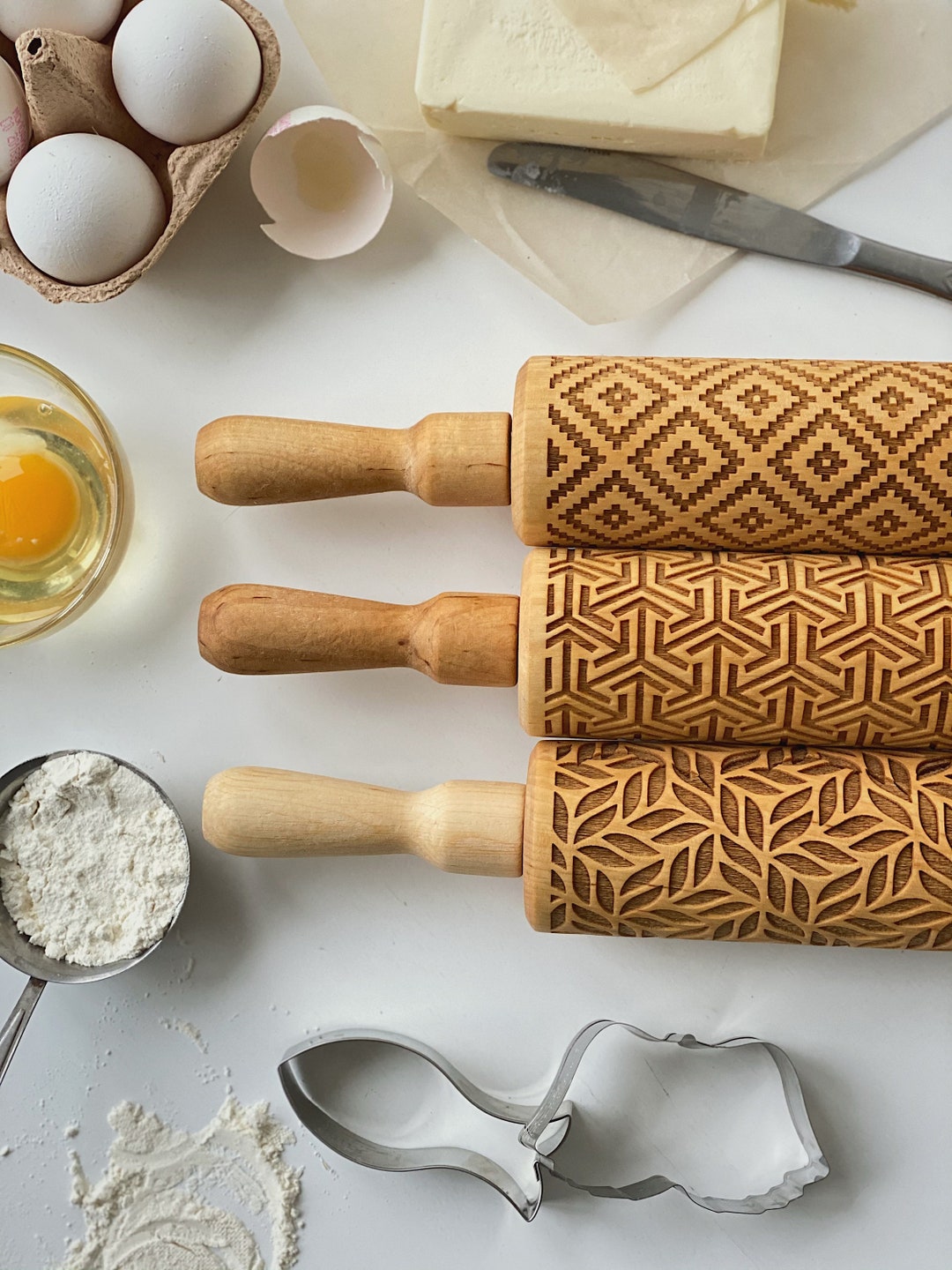


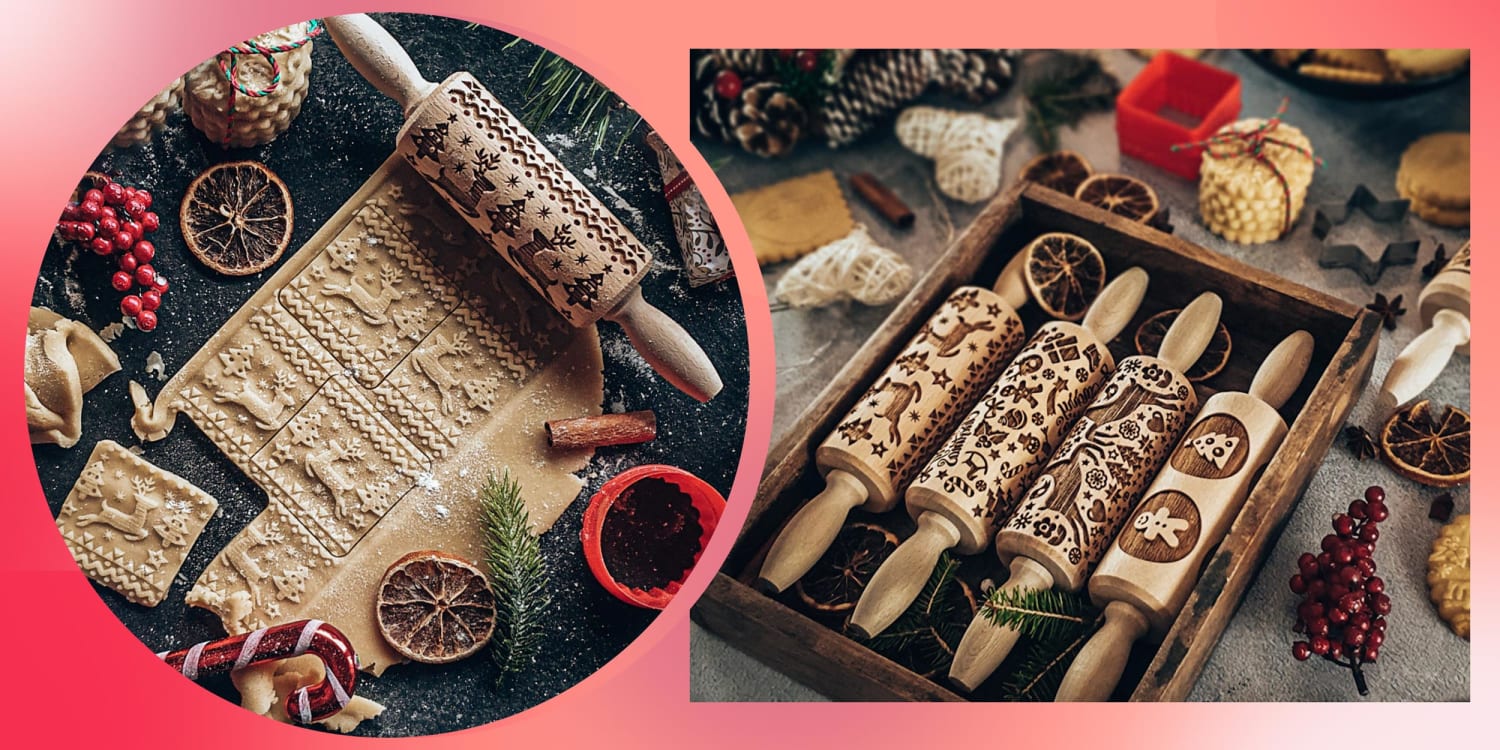
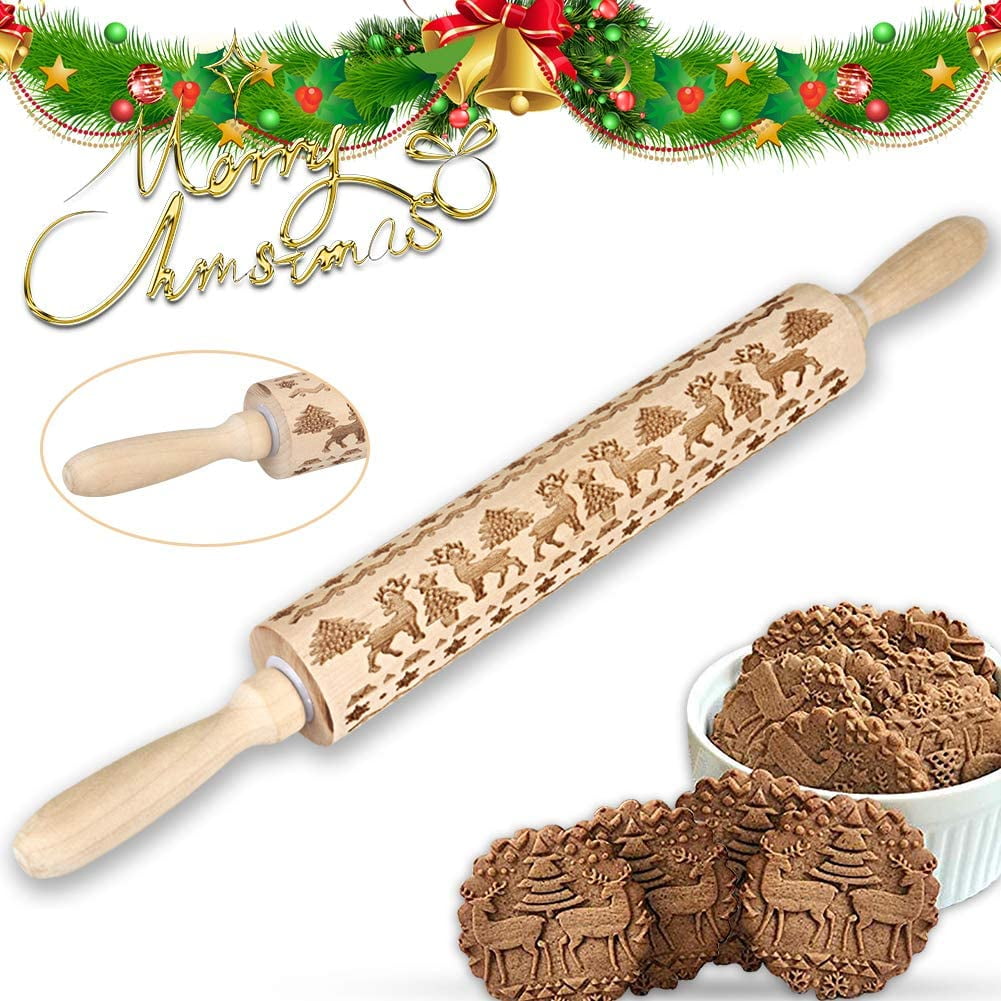
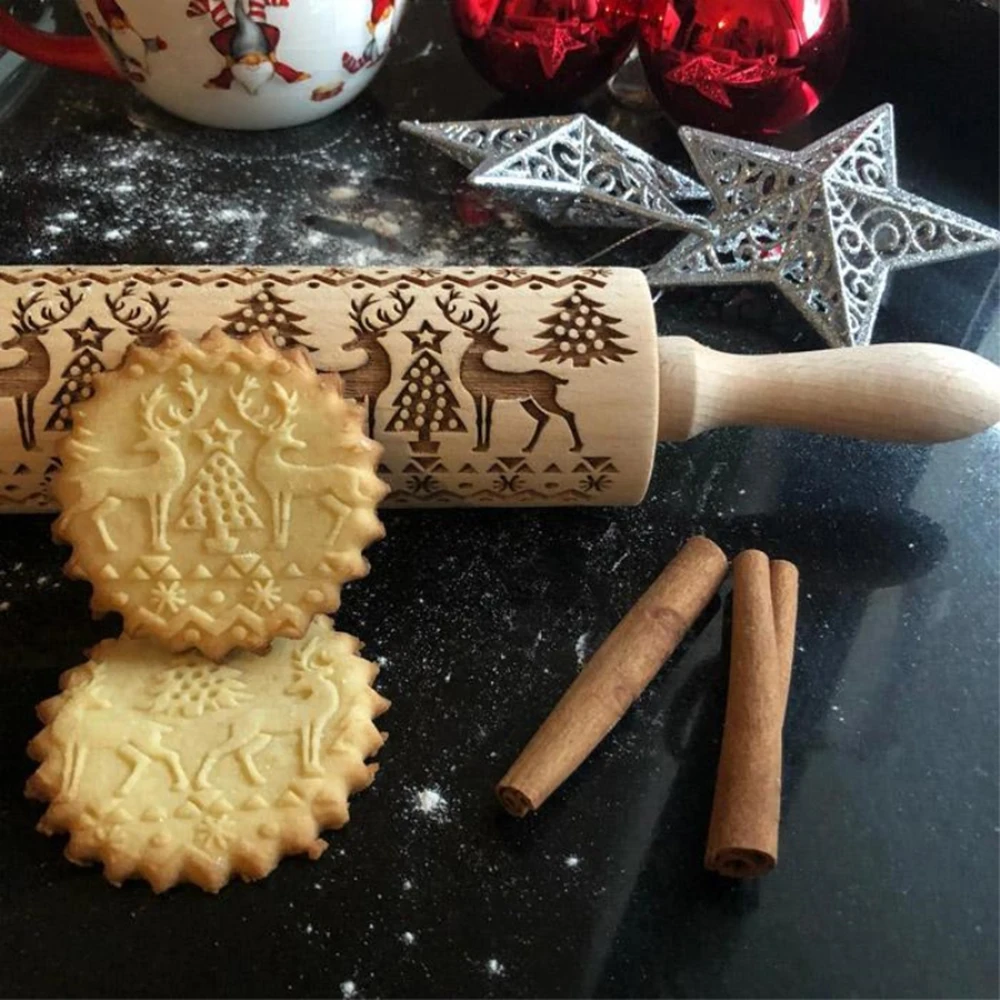


Closure
Thus, we hope this article has provided valuable insights into The Enchanting Art of Christmas Baking: Unveiling the Magic of Embossed Rolling Pins. We hope you find this article informative and beneficial. See you in our next article!